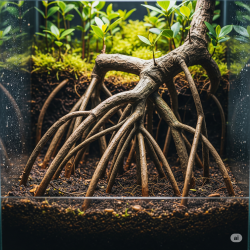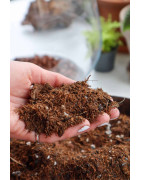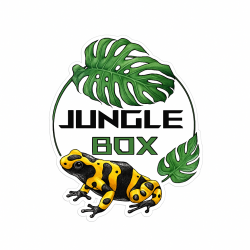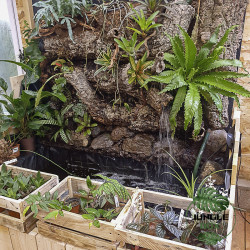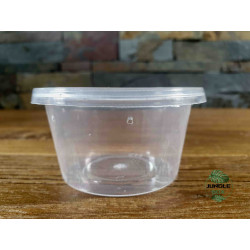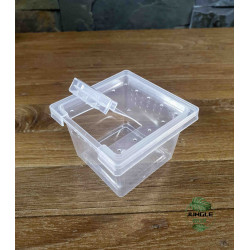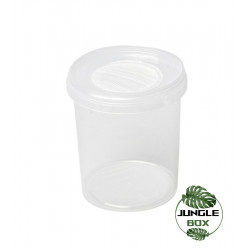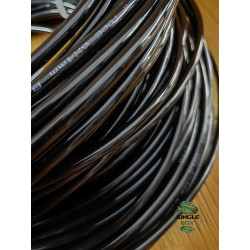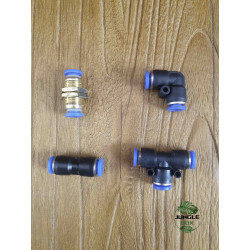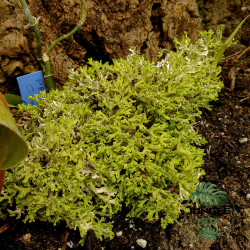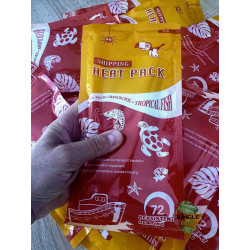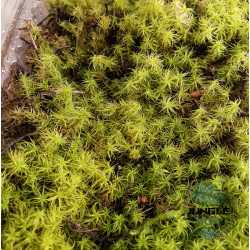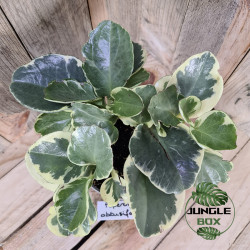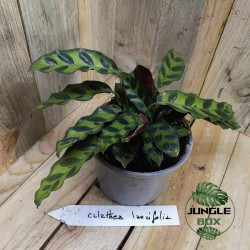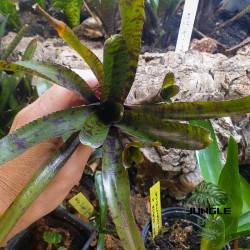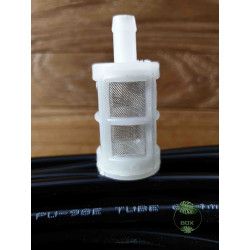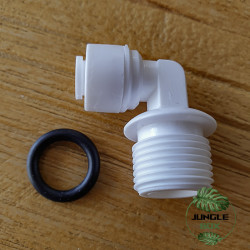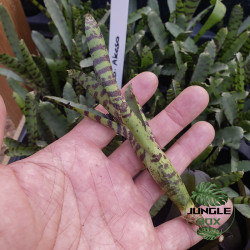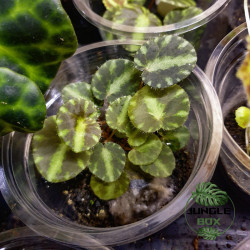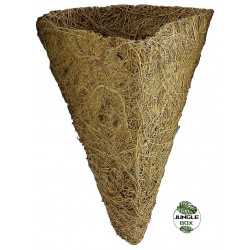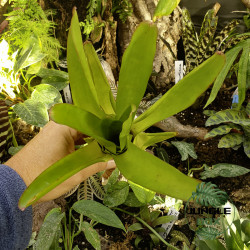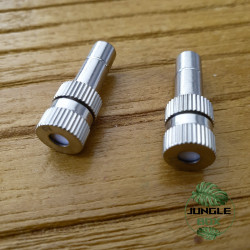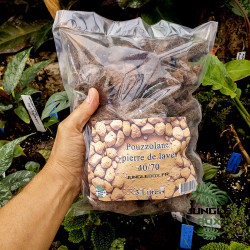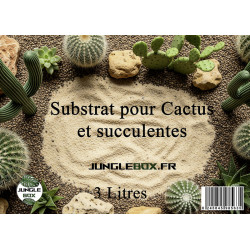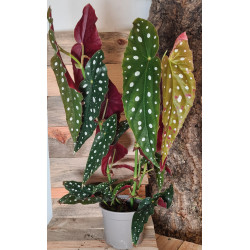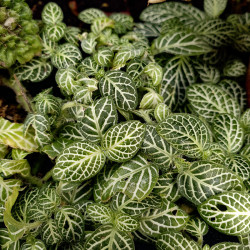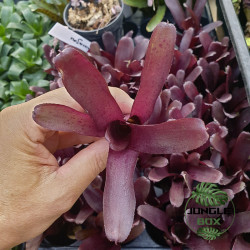Home

Subcategories
-
Plants
🌿 About JungleBox
Welcome to JungleBox — where plants grow with love, care, and deep respect for nature!
Here, 80% of our plants are grown on-site, right in our own greenhouse. No unnecessary transport, no harsh treatments: we focus on quality, transparency, and a natural approach.
💧 Watered only with rainwater
🌱 Fertilized with 100% natural worm tea
🚫 No chemical fertilizersWhy? Because we care about the safety of your reptiles and amphibians. Our plants are grown without harmful substances, making them perfectly safe for terrariums — and beautiful as indoor plants too.
At JungleBox, we’re not just selling plants —
we’re nurturing a healthy, local, and life-friendly ecosystem.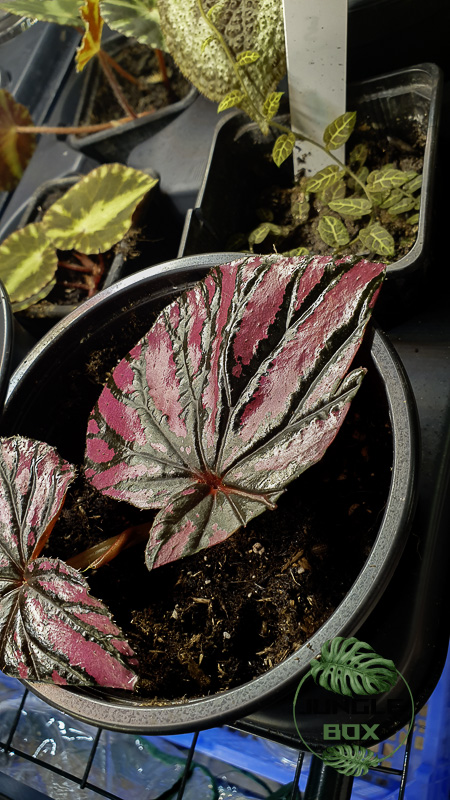
-
Natural Vines & Roots
Bring a wild, natural touch to your terrarium with our carefully selected natural vines and roots. Sourced from untreated plant materials, each piece adds structure, texture, and character to your setup — perfect for enhancing tropical, desert, or aquatic environments.
Every root or vine is unique in shape, texture, and color, making it easy to create realistic and aesthetic terrarium landscapes, whether for plants or exotic animals.
-
Substrats
🌱 Our Substrates: Natural, Safe, and Homemade
At JungleBox, we take quality seriously — especially when it comes to the wellbeing of your animals.
That’s why our substrates are homemade, using 100% natural ingredients, with no additives or chemical treatments.
🪵 Bark, fibers, mosses, soil… every element is carefully selected to provide the right balance of moisture, airflow, and microfauna for a healthy, stable terrarium.
🐸 No chemical fertilizers, no pesticides, completely safe for reptiles, amphibians, and invertebrates. Just what nature intended — and nothing more.
🌍 At JungleBox, we keep it simple and honest:
substrates designed by nature, for life.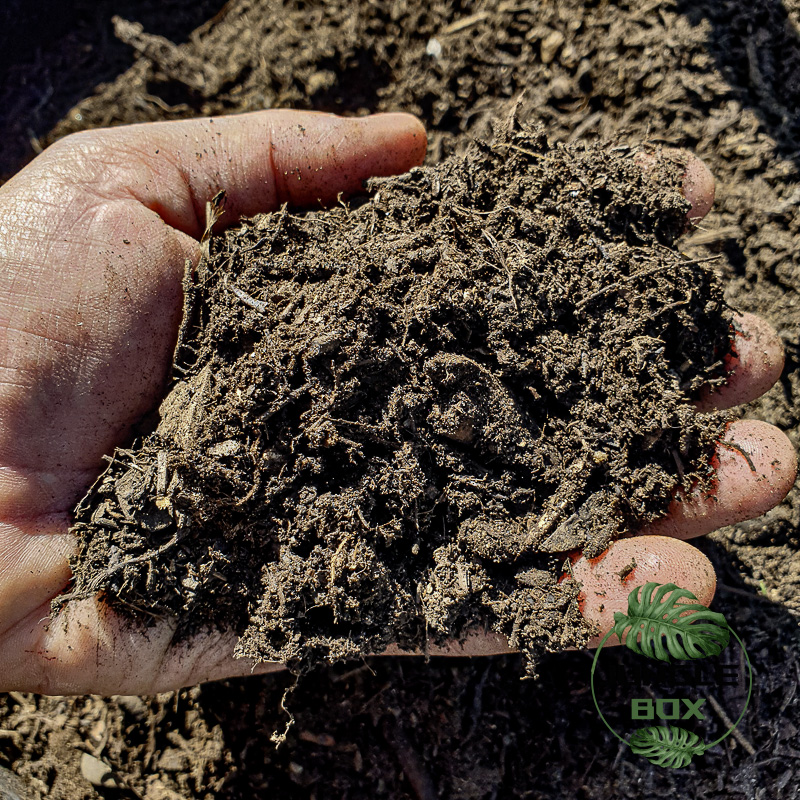
-
FIgurines
"Discover exclusively in France our wide range of figurines dedicated to plants and animals. Whether realistic or abstract, you can start a wonderful collection!
Some replicas are made to order with a 45-day lead time as they are hand-painted. This information is specified in the product description.
We ship figurines and replicas worldwide."
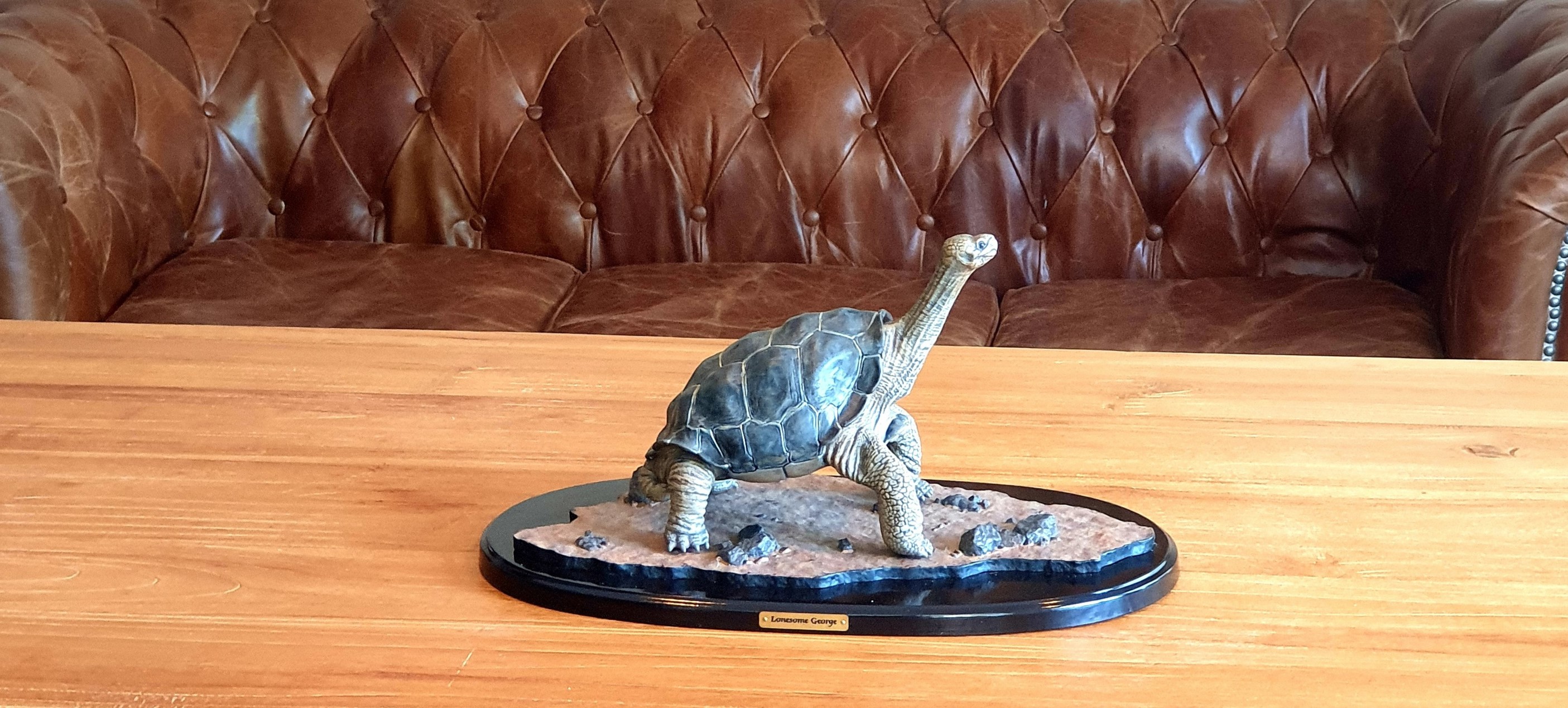
-
Dendrobates Dart Frogs
Capable and certified to keep all reptiles (including venomous species), amphibians and tarantulas for more than twenty-five years, we at JungleBox have decided to respond to the growing demand for dendrobates. This evolution is the natural extension of our expertise and fits perfectly with our tropical planted terrariums.
Dart frogs are iconic amphibians from humid tropical forests, known for their vibrant colours and active behaviour. All our dart frogs are captive-bred and offered in perfect health. They are fully adapted to terrarium life and comply strictly with current legal requirements.
Each product page provides detailed information on the origin of the animals, their biological needs, adult size and recommended care conditions.
This category is intended for both beginners and experienced keepers looking for robust dart frogs from responsible breeding lines, carefully selected for their quality.Below is a non-exhaustive list of the dart frogs you will soon find at JungleBox:
Dendrobates auratus
“El Oro”, “Taboga”, “Superblue”, “Panama Special”, “Peña Blanca”, Microspot, “La Coca”, “El Cope”, “Campana”, “Colon”, “Costa Rica”, “Capurgana”, “Campana”, “Blue on Bronze”, “Birkhahn Line”, “Bahia Solano”Dendrobates leucomelas
“Bolivar/Netted”, “Guyana Banded”, “Band”, “Cerro Autana”, “Bolivar Gold”For the initial launch, we have selected two species that offer numerous localities with significant colour variations and do not require a certificate of capacity below 40 individuals (French decree of 8 October 2018).
Page currently being created and finalised.
-
Terrario
The interest in terrarium keeping lies in the ability to create and maintain living environments for a wide variety of reptiles, amphibians, and invertebrates. It provides enthusiasts with a fascinating experience of observing and studying these animals in a controlled environment. Terrarium keeping also offers an opportunity for education and awareness about the conservation of these species, as well as their behavior and specific habitat needs. Additionally, it allows enthusiasts to exercise their creativity by designing unique setups and learning to maintain a balanced ecosystem.

-
Hydroponie
Hydroponics is a method of growing plants without traditional soil. Instead, plants are grown in a nutrient-rich water solution, providing all the necessary nutrients for their growth. Here are some key points about hydroponics:
-
Hydroponic Systems: There are several types of hydroponic systems, each with its own advantages and disadvantages. Some of the most common systems include Deep Water Culture (DWC), Ebb and Flow, Wick System, and Nutrient Film Technique (NFT).
-
Advantages of Hydroponics: Hydroponics offers several advantages over traditional soil-based growing. It allows precise control over nutrients and pH, more efficient use of water and nutrients, faster plant growth, and the ability to grow in restricted or indoor spaces.
-
Types of Crops: A wide variety of plants can be grown hydroponically, including vegetables, herbs, fruits, flowers, and even some ornamental plants. Common crops grown hydroponically include lettuce, tomatoes, cucumbers, peppers, and strawberries.
-
Plant Nutrition: Plants in hydroponics primarily receive their nutrients from the nutrient solution in which they are grown. This solution needs to be balanced with the right levels of nitrogen, phosphorus, potassium, and other essential elements to support healthy plant growth.
-
Environmental Control: Successful hydroponic growing requires careful control of several environmental parameters, such as temperature, humidity, light, and air circulation. Fluctuations in these parameters can impact plant health and growth.
In summary, hydroponics offers an innovative and efficient method of plant cultivation, suitable for a variety of applications ranging from small-scale home systems to large commercial installations. With proper planning and management, hydroponics can produce abundant, high-quality crops year-round.

-
-
GOOD DEAL
-
Bundle Deals: "Buy one, get one free on a selection of items, valid for 1 month or until stocks last."
-
Group Purchases: "Pool your orders to get the best prices."
-
New Deals Weekly: "New deals are offered every week. Check this 'Good Deals' tab regularly."
-
-
gift card
-
Frank Deschandol’s...
JungleBox is proud to present the first book by wildlife photographer Frank Deschandol, an extraordinary work already praised as a milestone in naturalistic photography. Known for his meticulous artistic vision and masterful use of macro photography, Deschandol delivers a breathtaking tribute to the delicate world of insects, amphibians, reptiles and tropical flora.
From page to page, the reader enters a miniature universe: surreal dart frogs, magnified insects, reptiles revealing rare textures, and tropical plants captured like living sculptures.
For terrarium creators, herpetology and entomology enthusiasts, as well as nature photographers, this edition instantly becomes a reference.
🎥 Also discover: your film shot in French Guiana
To extend the immersion into tropical ecosystems, JungleBox also shares the film we created in French Guiana — a journey through wild forests and exceptional biodiversity:
👉 https://www.youtube.com/watch?v=K12iGTB21tsA perfect visual complement to Frank Deschandol’s book, offering a deeper exploration of the hidden beauty of tropical wildlife.
-
Indoor Tropical Pond
A custom indoor tropical pond designed and built by Junglebox transforms your interior space into a unique, living tropical ecosystem that is both visually striking and calming. Each project begins with a detailed consultation to fully understand the client’s requirements and expectations, followed by a personalized quotation tailored to technical constraints, budget, and aesthetic goals. Every pond is fully bespoke, including dimensions, shape, water circulation, and seamless integration into the existing environment.
The design of an indoor tropical pond by Junglebox is based on a careful balance of design, biology, and engineering. Clients are actively involved in the selection of materials, decorative elements, and tropical plants, ensuring the final result aligns precisely with their vision. All materials are chosen for durability, safety, and compatibility with indoor environments, while decorative features such as rocks, roots, and natural or contemporary elements enhance realism and long-term stability.
Filtration, lighting, and water circulation systems are professionally engineered to ensure clear water, a healthy ecosystem, and easy maintenance over time. Whether the project is a decorative indoor pond, a biotope-style installation, or a high-end tropical feature, every custom indoor tropical pond created by Junglebox is designed to blend harmoniously into its surroundings.
Junglebox provides design and installation services for indoor tropical ponds throughout France and across Europe, for both private and professional clients. Choosing Junglebox means benefiting from full respect for client preferences, expert guidance at every stage, and a custom-built tropical ecosystem that is durable, immersive, and truly one of a kind.

